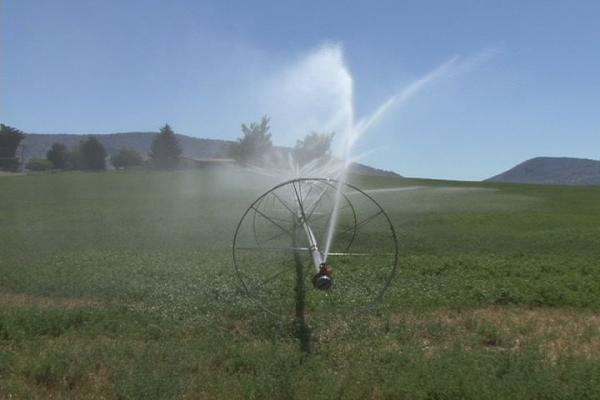
KLAMATH FALLS, Ore. - The
water is beginning to flow again
in some Bureau of Reclamation
irrigation canals in the Klamath
Basin.
Some of the irrigation water
that was cut off earlier in the
spring is now available, thanks
to a cooler-than-normal spring.
Thousands of customers in the
Enterprise Irrigation District
in South Suburban Klamath Falls
who didn't expect to get water
at all this summer are seeing
some.
"That's exactly how we're
looking at it. The water we can
get now is better than what we
had yesterday. So, we're looking
at it as an opportunity to give
people as much water as
possible. Get the lawns green,
get the field going again, and
hopefully help out as much as
possible," said Greg Addington
with the Klamath Water Users
Association.
About 5,500 acres will now be
receiving irrigation water this
summer. That ranges from large
fields of alfalfa or pasture, to
some suburban lawns and gardens.
"We'll get some people who
haven't got any water up to this
point. And that's a good thing.
If we can take some relief on
some of the ground water wells
on the aquifer, use some more
surface water as opposed to
ground water, that's gonna
help," Addington said.
Addington says many potato
farmers had to move their
operations to keep their
contracts with commercial
customers. Some went as far as
Burney, California to plant
their crops when it appeared
there would not be enough water
available through the Klamath
Reclamation Project.
Because of the way the
allocation is set up with the
Enterprise Irrigation District,
most customers won't receive any
water until July 19. For now,
however, those who are receiving
water are using what they can to
try to restore crops that have
been slowly drying up.
On Friday, the Klamath County
School Board voted to spend the
money necessary to drill a new
well for Lost River High School
near Malin. Falling ground water
levels left the pump high and
dry last week, and a new, deeper
well is planned to serve the
school.
A combination of drought and
Endangered Species Act demands
for protected salmon and sucker
fish had forced steep cutbacks
in the KRP, which serves more
than 1,000 farms.
